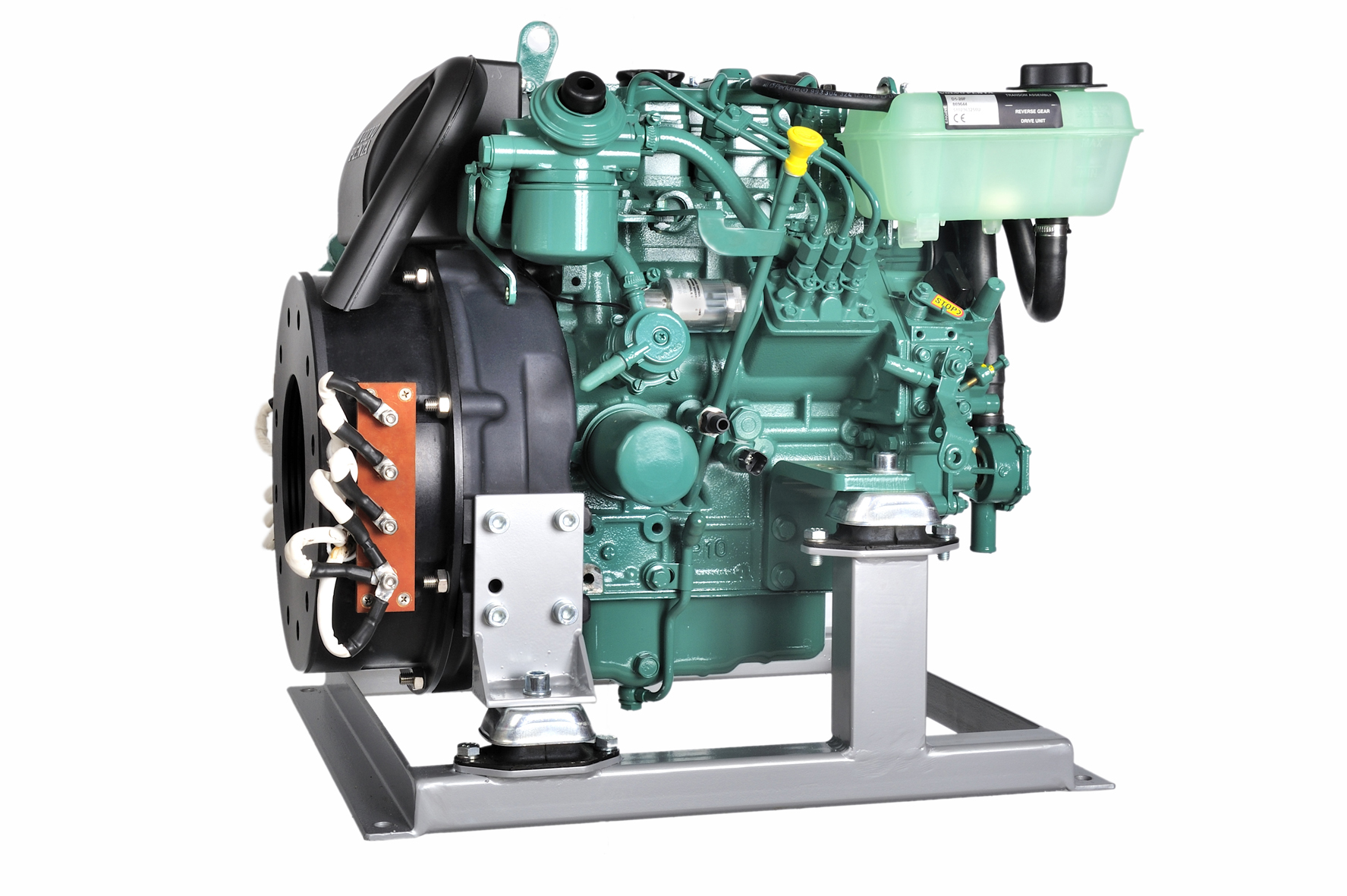Hybrid Electric Propulsion
The concept is to place one or two DC generators in the most optimum location within the vessel to provide power for the electric propulsion motors and DC to AC inverters and to charge batteries, all at the same time. The system can run one or more generators and combine the electrical output. The electric motors can be used for the main propulsion in sailing and unmanned undersea vehicles (UUV) or for bow thrusters in motoring craft.
Having one central battery bank powering the electric propulsion saves the sailor the inconvenience of having to warm up a diesel to motor out of his slip, off his mooring, or out to the breakwater. Propulsion under motor is silent and odor free.
Auxiliary Power
Using a DC generator, battery bank, and an inverter creates an on-board power system that can have both DC and AC power 24/7, yet the generator runs only a few hours a day or week. This is the most efficient and convenient source of marine power.
- Up to 110 amps of 12 Vdc charging for house and engine starting batteries.
- Up to 5.5 kW for battery charging, inverter power, and electric propulsion.
- Charges batteries and powers the inverter at the same time.
- Charges the batteries and operates the propulsion motor at the same time.
Dual Voltage Systems
Having dual systems and separating the 12 Volt (or 24) house electronics (navigation, communication, lights, and stereo) from the battery bank used for the inverter and heavy DC loads (anchor, refrigeration, bow thrusters) offers many advantages. There is less electrical interference between the DC appliances that are producing the electrical noise and the appliances that are sensitive to it. Having the heavier DC loads operate at higher voltages improves reliability, safety, efficiency, and reduces the weight of copper onboard.



